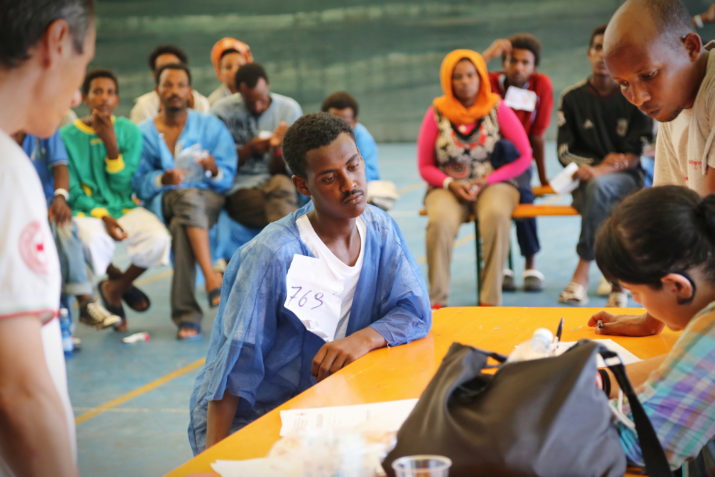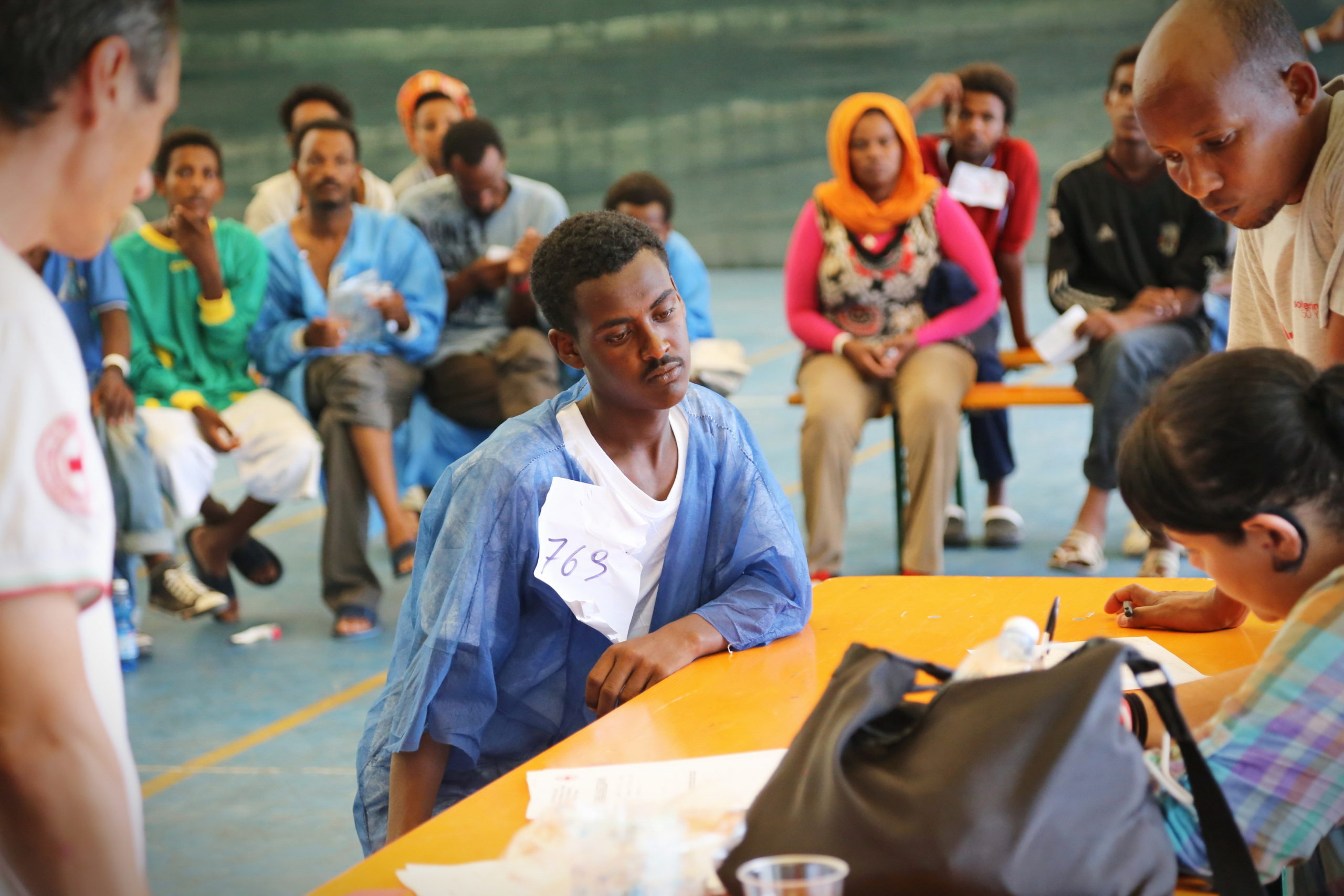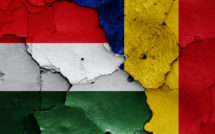

This is part of our Campus Spotlight on the University of Illinois Urbana-Champaign.
The American experience of the Age of Mass Migration in the first two decades of the twentieth century teaches us that, despite the documentable economic benefits for the host country, nativist politicians are very effective in mobilizing sectors of the local populations against newcomers. At the center of anti-migrant narratives, therefore, are often cultural (rather than economic) concerns about the preservation of ways of life. Racist arguments become a tool to signal the “essential” inability of immigrants to become part of a common culture in the host country. In the words of one of the most important American economists of the twentieth century, Irving Fisher:
If we could leave out of the account the question of race and eugenics I should, as an economist, be inclined to the view that unrestricted immigration, although injurious to some classes is economically advantageous to a country as a whole, and till more to the world as a whole. But such a view would ignore the supremely important factors.[1]
Consequently, a pedagogy that tries to debunk narratives against migrants needs to engage students in a reflection on norms, prejudices, and habits of their own culture, rather than simply showing that migration is beneficial and that migrants’ culture is rich and worth exploring. Without a moment of self-reflexivity, students easily embrace either positive or negative prejudices toward migrants, mostly based on their general political preferences, but their understanding of the experience of migration remains abstract and superficial.
Even when we clarify that the goal of cultural self-reflexivity is crucial to a critical pedagogy on migration, how to achieve it in a course on migration is elusive. Students who enroll in classes on the topic of migration rightly expect to learn something about migrants and their cultures and, in a normal semester-long class, very little time can be devoted to norms and expectations of American culture. Moreover, the long process of socialization naturalizes the norms and habits of a community for all those who successfully grow up in it. As a result, considerable effort needs to be devoted to denaturalizing cultural practices, and the process often generates strong resistance. Particularly when it comes to hygienic practices or food practices that are often the target of racist and nativist arguments, socialization within the family makes cultural differences particularly hard to accept and understand. To put it plainly, it is fairly easy to explain to students that Italian, as Dante’s language, is a rich and attractive language, whereas it is much harder to make US students accept that octopus is a regular part of the Italian diet or that horsemeat is a highly praised baby food. When politicians frame migration as a cultural threat, it is on these unreflected upon cultural preferences that they often base their argument, and an emphasis on community and safe environment, normally beneficial for a positive learning experience, might be counterproductive when discussing migrants.
Culture shock can become an important pedagogical tool to induce self-reflectivity without forcing the teacher to be perceived as agonistic, or even aggressive, in the relationship with the students. Culture shock is a universal experience when studying abroad and students can find support among their peers. Furthermore, the teacher can position herself/himself as a guide to navigate cultural differences without being in the position of presenting difference as an artificially constructed experience. Studying migration as a study abroad experience leverages the moments of self-reflexivity created by culture shock as a tool to connect students with migrants’ experiences not as citizens who observe newcomers, but as fellow travelers in the maze of signs presented by a foreign culture.
Since 2013, in collaboration with my colleague Eleonora Stoppino, I have been teaching classes on migration in faculty-led programs in Italy to overcome the limitations that I experience when I teach migration to students on campus. I accompany groups of around fifteen students for two weeks to meet with NGOs, administrators, politicians, journalists and, most crucially, migrants to conduct ethnographic research on how migrants perceive Italian culture and are perceived by Italian society. The geographical area of research is comprised of three cities: Milan, Bergamo and Pavia. These offer three comparable but different perspectives on migrants’ experiences in Italy. Many NGOs have collaborated in the course and facilitated the encounters. Before and after this experience abroad, students meet on campus for regular classes to discuss a relevant bibliography and the results of the ethnographic research. Students enrolled in the class come from a large variety of majors, mostly from the humanities, and female students are usually preponderant. Some students have had a recent family history of migration, while others have not. Often, there is no ethnic majority among the students, although white students constitute a narrow majority. Because of the demanding nature of the class, students are generally recruited from the Honors program. As a final project, students can choose among many possibilities, including video ethnography. They are encouraged to rewrite pamphlets or other documents normally distributed to migrants during their first months in Italy in an attempt to make these materials more useful for the migrants.
By design, a lack of language proficiency has been central to the experience. One of the first experiences that the students have as part of the ethnographic component of the class is the visit to Italian language classes for migrants. Migrants have often reported to the students the challenge they experience in obtaining quality jobs or in socializing with Italian native speakers because of their lack of language proficiency. By this first encounter, the students have also usually already experienced the difficulties of navigating a space without being proficient in the local language and they tend to relate to the migrants, both as students and as foreign language speakers. The experience is often enhanced by the ability of some of the students to act as translators for other students and migrants, further increasing their connection with the migrants’ experiences.
An ethnography of the NGO workers who lead the visit is then introduced as a project in order to further develop students’ self-awareness. In the US, students frequently identify with successful and often compassionate NGO workers. In class discussions taking place abroad, students seem just as likely to identify with migrants as they are to identify with Italian NGO workers. The linguistic and cultural barriers between the NGO experts and the students force the latter to experience the distance between natives and migrants, even when the natives are willing and eager to help. For the students who have had previous experiences with NGOs, this quickly becomes a way of identifying both best practices and questionable shortcomings. The students are often quick in pointing out lack of diversity, cultural competence, or simple age difference between the Italian NGO workers and the migrants.
The sharing of food with migrants has also been a crucial part of the course experience. Students are often shocked by how Italians consume their food and by Italian food itself. A positive prejudice that associates Italian cuisine with good food often prepares students poorly for the reality of Italian food consumption, which is different from their own habits in terms of schedule, quantity, and kind of food consumed daily. Often, the students have been as or more familiar with foods prepared by migrants than they have been with the food consumed by Italian students in university cafeterias. American students and migrants have often found common ground in criticizing the Italian assumption that Italian food is better than their own food, while they become more self-aware of their own consumption practices through the pressure that Italians exercise on their food habits.
A visit to a local prison to witness the work of NGOs with imprisoned migrants has been another crucial component of the course. A high number of incarcerated migrants (in the prison we visit in Pavia they often constitute more than 60 percent of the imprisoned population) participate in rehabilitation programs meant to teach them skills and facilitate their socialization in the Italian context. One of the goals of the visit has been to de-romanticize migrants, often portrayed by NGO workers as victims, and achieve a more critical understanding of the complications of migration as a phenomenon. Again, culture shock and the study abroad experience were leveraged to encourage critical thinking. For most of the students, this constitutes the first time they have ever set foot in a prison. However, as US citizens (most program participants are American) they don’t hold any strong opinions about the Italian legal system. Thinking of themselves as law-abiding citizens, they are inclined to see people in jail as people who deserve to be there. Unsure about the fairness of the legal system in a foreign country, they are often struck by the high percentage of migrants in the prison population. Consequently, they openly wonder about the potential systemic bias against migrants in the Italian penal system and about the failure of alternative measures to prevent criminal behavior, which is often associated with drug dealing.
Finally, the course has tried to challenge the idea that migration is an inherently modern, if not contemporary, phenomenon. A few targeted visits to medieval and early modern historic buildings, originally meant to provide for migrants and refugees defies narratives that relate migration to sudden and unpredictable crises. This part of the class has often been the most challenging, given students’ lack of specific historical preparation. Whereas managed culture shock serves the class well, visiting historical sites, albeit connected to the class, has often reset students’ attitude into a touristic mode. Despite this shortcoming, the experience has been important to provide moments of relief from the pressure of the class.
A more systematic study of the benefits and drawbacks of study abroad to address migration in a critical and self-critical perspective could offer answers to questions of scalability and long-term pedagogical benefits. Nonetheless, the experience in the program’s last ten years has been promising. Encouraging students to think of diversity as an asset, and difference as part of our social experience, is a goal worth pursuing while navigating the complexities inherent to critical thinking. Making students connect emotionally with migrants’ experiences without manipulating their feelings might be a way to foster global awareness in today’s students.
Emanuel Rota is associate professor of French and Italian, associate professor of History and the Program in Jewish Culture and Society, and director of the European Union Center at the University of Illinois. An intellectual and economic historian by training, his research has examined fascism, labor, bio politics, migration, and race in Italy and the Mediterranean.
References:
[1] Fisher, Irving, “Impending Problems of Eugenics,” in The Scientific Monthly, American Association for the Advancement of Science, vol. 13 (1921), 226.
Published on August 4, 2020.




